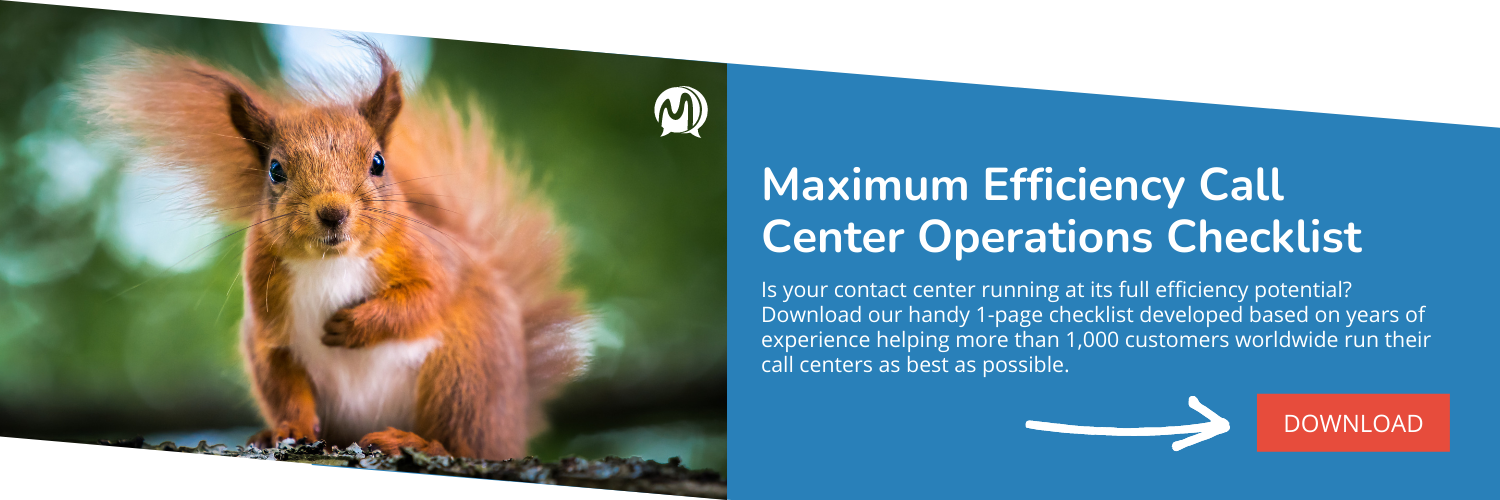4 Key Considerations For Setting Virtual, Remote, Or Hybrid Contact Centers Up For Success
In the past, very few customer service professionals (5% in 2017) were working from home due to concerns about how it would negatively impact the company culture, collaboration, and work performance, as well as career prospects of the remote agents.
But as the COVID-19 pandemic hit in early 2020, companies around the world had days to (amongst other things) completely rethink their customer service and support operations.
For example, T-Mobile enabled 12,000 reps distributed over 17 call centers worldwide to work from home within two and a half weeks. In an interview with CIO.com, CIO and Chief Product Officer, Cody Sanford, said that T-Mobile had to "rebuild [its] entire customer care operations forensically", making it "one of the toughest rapid-fire turnarounds" of his career.
Remote, Virtual, & Hybrid Support Teams Are Here To Stay
Since then, service managers have been forced to give Working-From-Home (WFH) an unasked trial period, and the vast majority of them have discovered that their fears were unfounded.
In fact, according to a 2021 Gartner survey of 5,000 professionals, 81% of managers believe that "between 30% to 80% of their workforce will primarily be working from home two years from now [by 2023]." This is in line with what their agents want: "70% of customer service and support employees want to continue to work from home (WFH) at least once a week after the pandemic ends."
And Gartner isn't the only analyst company that is predicting this. In fact, there are a myriad of studies and surveys that say fully virtual, mostly remote, or even hybrid (some days remote, some days on site) models will become the norm for customer service teams.
4 Keys To Setting Your Remote Contact Center Up For Success
Therefore, the goal has to be to create a work environment that:
- Is completely secure and compliant,
- Feels exactly the same from a user perspective,
- Provides the same performance, productivity, and collaboration, and
- Allows for consistent monitoring and evaluation,
whether your agents are working on-site, from their residence, or constantly switching between home and office. To accomplish this, you will need to consider the following four things.
1. Water-Tight, Built-In Security & Compliance
Remember those crazy-to-down-right scary stories of Zoom Bombings or Video Conference Hijackings from the early days of the pandemic? For many contact center managers, the possibility of uninvited guests listening in (rare) or remote agents accidentally or intentionally breaching security protocols and compliance regulations (the most common cause for data leaks) is the stuff nightmares are made out of!
So, letting agents work from home can feel like losing the ability to step in and help out. Therefore, it is imperative that your Customer & Workforce Engagement solution has water-tight, built-in security and compliance features that eliminate human error and negligence wherever possible.
For example, if you are using a Cisco platform, the MiaRec's Recording Announcement For Cisco add-on can switch on the "This call is being recorded" message for both inbound and outbound calls before the call is able to connect. This way, your agents don't have to remember making the announcement themselves and you can stop worrying about them forgetting it.
Another example is (automatic) PCI-DSS masking. With MiaRec, your agents can pause call recordings when the customer is giving sensitive data and resume the call after the data is entered, or our AI-driven speech recognition engine can be trained to automatically redact any number strings, such as payment card details, social security numbers, and even phone numbers.
These are just two little examples. You will find more information on streamlining your contact center compliance and security here.
2. Provide The Same User Experience Anywhere
In the above-mentioned interview, Cody Sanford explained how T-Mobile needed to “hygienically” ship all the equipment required (hardware and software) to the employees’ homes to enable them to work remotely within just 11 days of the lockdown starting.
While these were extraordinary circumstances, this shows the importance of having the right technology in place as we are moving away from pure on-site call centers and toward hybrid or remote contact centers.
To provide the same great user experience regardless of the agent's physical location, your contact center operations solution needs to support (among many other things) a variety of devices and telephony technology, such as VoIP, softphones, mobile, and landlines, and provide browser-based access to recordings.
3. Provide The Same Performance, Productivity, & Collaboration
Remote, hybrid, or virtual contact centers are never going to be successful if the agent's productivity is compromised (e.g., by having a different user interface), performance is diminished (e.g., slow connection), and/or collaboration is limited in a remote location.
There are many things you can do to allow for optimal performance and productivity of your remote agents. For example, depending on how large your network of remote agents is, you will want to make sure that you have enough local Content Delivery Network points to ensure performance. Your modern contact center operations solution needs to have secure storage as well as Advanced High Availability (automatic failover and Master-Master Server configurations).
4. Allow For Consistent Monitoring & Agent Evaluation
Last, but not least, you will have to be able to manage your remote, hybrid, or virtual agents the same way as you would those in a physical call center. Not only can this be easily achieved through modern call recording and voice analytics technology, but processes and, more importantly, outcomes are much improved by upgrading systems.
Specifically, this refers to:
- Remote live monitoring (listen to any ongoing call),
- Voice and screen recording with integrated playback (record any agent's screen or multiple screens synchronous to the voice recording),
- In-tool agent evaluation (evaluate an agent's performance consistently with built-in questionnaires/scorecards and keep track of scores over time), and
- Automatic agent scoring (automatically let MiaRec score your agent's performance based on a predefined set of criteria using Artificial Intelligence and Machine Learning, this enables you to score 100% of your calls and get a much clearer picture of what is going on in your contact center).
This allows managers to consistently and frequently monitor and evaluate agents which result in improved service quality, higher customer satisfaction, and better customer retention rates.
You May Also Like
These Related Stories
.png)
What Does MiaRec Bring To Five9 Customers?

Are MiaRec’s Cloud-based Voice Analytics Solutions Secure?


